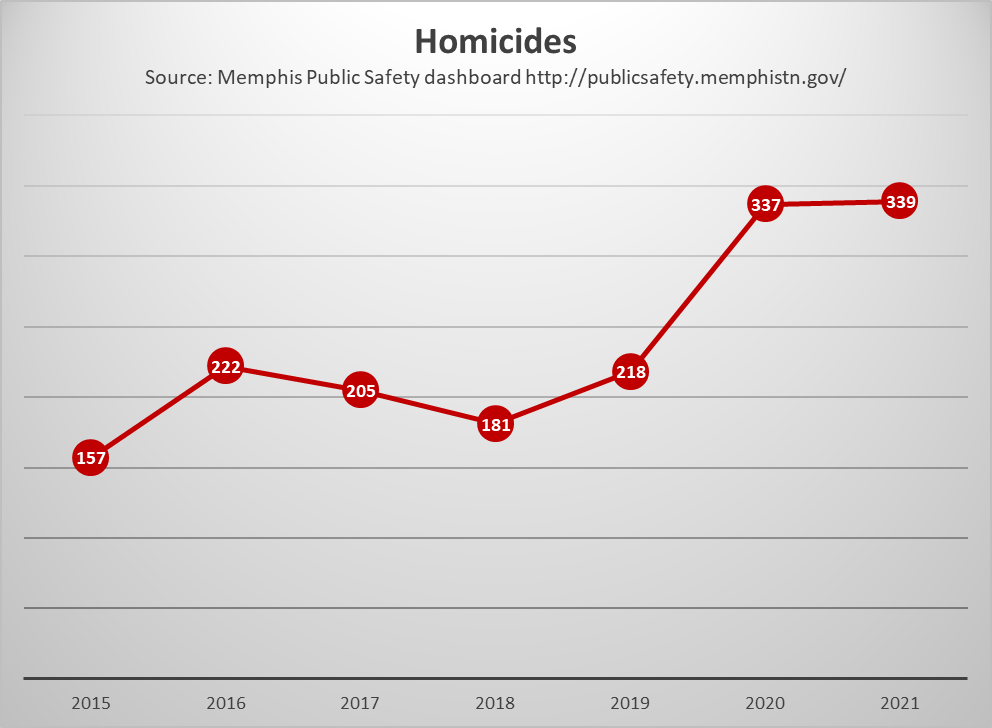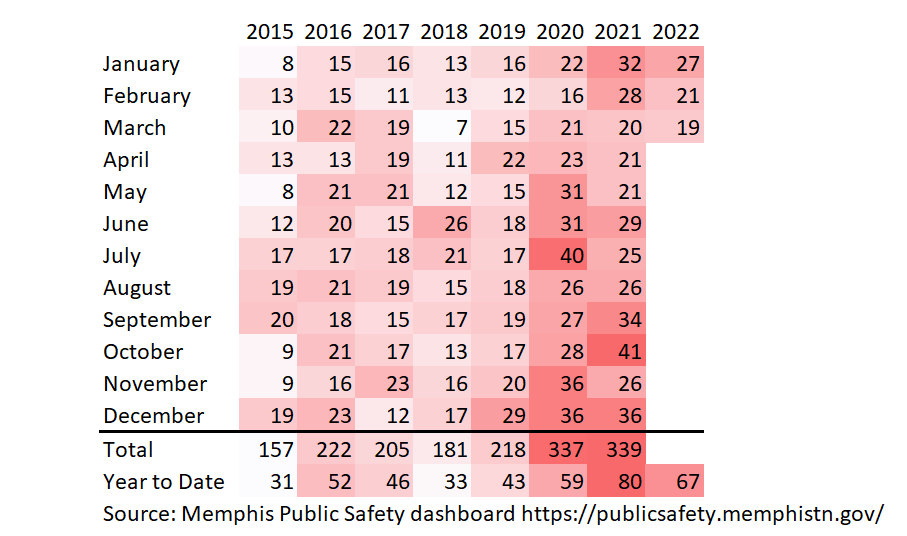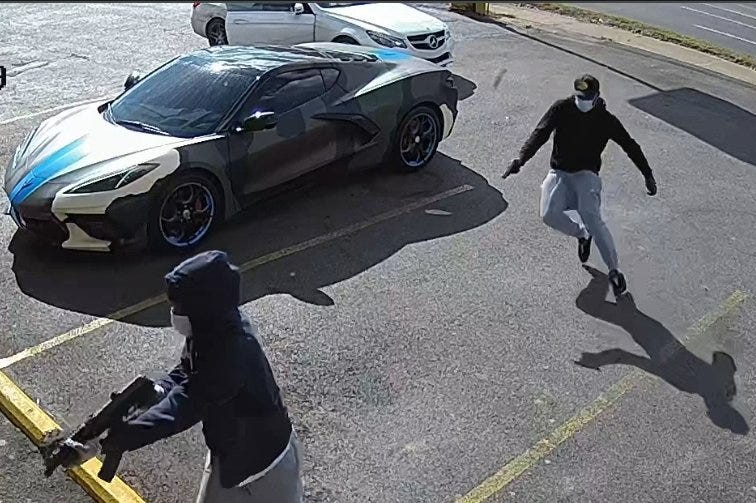An increase in violent crime has attended the pandemic in cities across the country, but we have felt its intensity deeply in Memphis.
For the five years preceding the pandemic, our community had an average of 196 homicides to mourn, investigate and prosecute. But for the past two years, the average is 338 homicides. That’s a 72 percent increase.

Unfortunately, the higher trend has continued this year. We’ve already had 67 homicides through the first three months of 2022.

On a per capita basis, the Memphis homicide rate either leads the country or is near the top among major cities. And that’s during a period when the nation has reached the highest levels of violent crime in 30 years.
Every number represents a tragedy – a life lost, a family devastated, a community torn apart. The damage to the psyche of children exposed to or harmed by the violence will impact their ability to learn, grow and function normally for years to come.
The Daily Memphian is calling it a “crime crisis.” Citizens are fed up.
The violence also delivers a long-lasting reputational cost to the city that depresses economic investment and further limits opportunity.
Shelby County has drawn national attention from some high profile crimes, including the slaying of Memphis rapper Young Dolph and the mass shooting at the Collierville Kroger.
Political leaders are somewhat split over what to do, but there are also many areas of agreement that bridge the ideological divide.
Some recent anti-crime initiatives with broad bi-partisan support include:
- The City of Memphis Group Violence Intervention Program
- Enhanced pay and bonuses to better recruit and retain LEOs
- Shelby County’s Youth and Family Resource Center
- The Juvenile Court’s youth counselor precinct liaisons
- The District Attorney’s 901 WRAP witness assistance program
- The Health Department’s Cure Violence team
- The Sheriff’s contract with mental health professionals
- The Governor’s $150 million investment in violence disruption
- The Crime Victims Center violence intervention pilot
These and other measures are now underway. We should also be looking to implement evidence-based practices such as those identified by the Council on Criminal Justice as being “Ten Essential Actions Cities Can Take to Reduce Violence Now.”
And to these suggestions, I would add what to me is obvious: reverse the set of policies that did not stop the spread of COVID-19 but did disrupt our way of life and literally encouraged anti-social behavior.
We should not have made the crime crisis worse by leaving kids out of school, removed from their teachers and peers. Instead, we need to keep children in the classroom and expose them to positive social experiences. Increase learning and literacy, not drop-outs and delinquency.
We should not have closed businesses, displaced people from their jobs and disrupted the supply chain. Instead, we should let private companies thrive and adapt to changing situations, incentives and opportunities. Let people work.
We should not have adopted massive spending packages that inflated the money supply and increased the cost of living. Instead, we should allow citizens to invest in their own networks and expand the capacity for local production.
And finally, we should not have encouraged people to run around with their faces covered. The claim that masks make us safer has no material support.

This is not normal. This is not safe.
It makes no sense for us to pretend otherwise.

